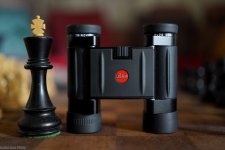The following is simply my personal perspective on 8x20 binoculars.
Yes, 8x20 can be used for whatever purpose you have in mind. But I'd go for recent model production or new. The older ones aren't quite up to the newer versions. (See Herman's post #33).
But, 8x20 binoculars (I have had Trinovid 8x20BCA since about 1988) would be my last choice of use, unless it was simply impossible/impractical for me to employ my Zeiss Terra ED 8x25, which would be my second-to-last choice, for general use. Much of this comes down to ease-of-use/size/ergonomics. I consider the 8x25 a much more suitable general use binocular than 8x20.
If "pocket size" was a requirement, I would take the 8x20 Trinovids to the symphony (that's precisely what I bought them for in 1988), but today, I'd much rather have my Terra ED 8x25 or especially, my UVHD+8x32s, if the somewhat larger size wasn't any issue.
We're all different, in our needs, applications, and desires, so this is purely personal... but my smallest preferred (though not really pocketable) binoculars are the superb and compact Leica UVHD+ 8x32. These are magnificent alpha grade, which becomes quite obvious when you hold them and put them to use. And, they're still remarkably compact! If I were to have but one pair of binoculars that would be for all purposes... the UVHD+ 8x32 is most definitely my choice - and I'd gladly part with, once again, the $2100 for a pair of these.
If pocket size is not an absolutely essential feature... you should at least consider the Zeiss Terra ED 8x25. They are quite compact, have very good performance, and are priced very affordably. Many, here on the forum, are fans of this particular binocular.









